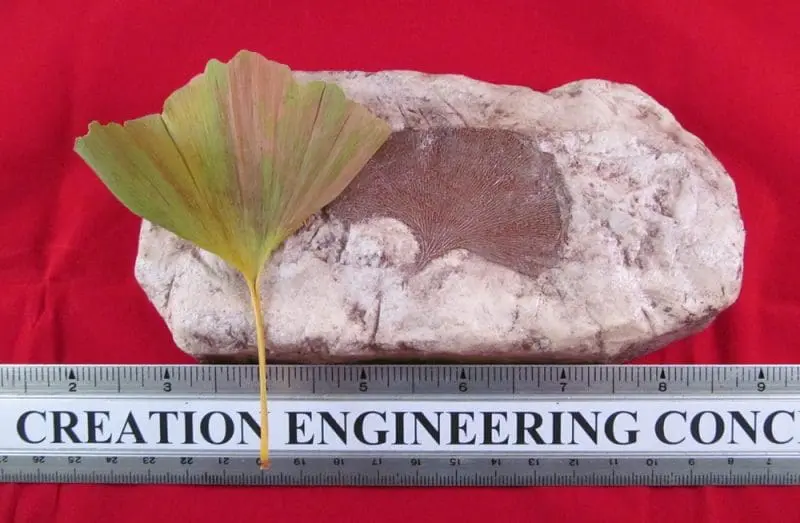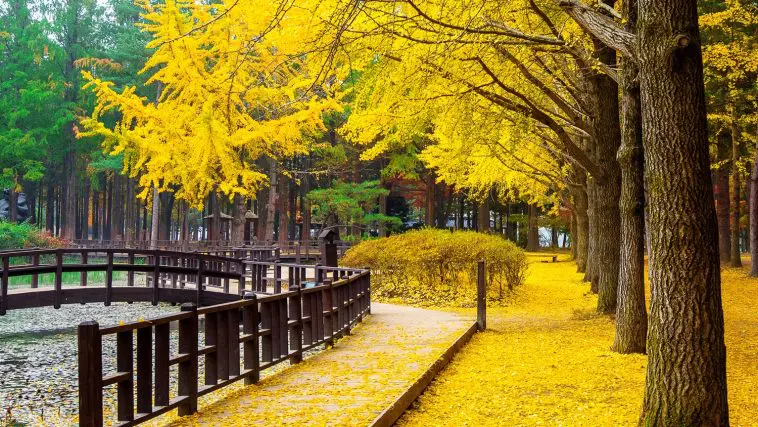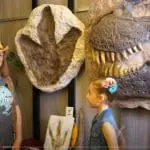[Originally published as Ginkgo Biloba—A Famous Living Fossil]
The Ginkgo biloba tree of today looks just like the numerous examples of fossil ginkgoes found in the rock record. Thus, it is called a living fossil. It is famous because evolutionists have tied it to the deep-time paradigm. They say such things as the
“Ginkgo biloba is the oldest tree species on planet earth” and “because of its great age in the unimaginable spectrum of geologic time, ginkgo epitomizes persistence—fighting the odds and surviving.” ~Stephan Brown1
This self-described ginkgo fanatic termed one of his experiences with an old-growth woodland of ginkgoes as follows:
“I stood transfixed for many minutes. It was overpowering to approach these wise ones after so many years of waiting for and dreaming of this meeting. It was humbling to be able to touch these oldest ancestors of the ancient clan of trees. There I was, only one of billions of humans and other living creatures who had gone before me, a mere blink in the spectrum of time, standing before three huge trees whose ancestors had communed with dinosaurs in the pure, oxygen-rich atmosphere of a prehistoric planet. There I was, in the presence of the oldest of the old. There are some feelings that words can never describe. I was in that indescribable space of complete silence and stillness where the spirit feels at one with the momentum of the universe.”2
Stephan also wrote, “Ginkgo biloba is a truly amazing plant that, to me, represents all that ever was and gives us hope for all that ever will be.”3
Another writer said this:
That ginkgo has survived essentially unchanged for as much as 200 million years is a miracle: virtually all other kinds of plants and animals that occurred with it more than 150 million years ago have become extinct.4
These quotes are the result of secular presuppositions of evolution and millions of years. They are not supported by true science or historical records. The fossil evidence makes more sense if explained using biblical creationist presuppositions of an initial created order modified by a catastrophic global Flood some 4,500 years ago.

Today the most common connection for the general public to the ginkgo is through the use of its leaves and nuts for medicinal uses. It is touted for the improvement of memory as well as for the treatment of allergies, depression, poor circulation, and other conditions. As with many homeopathic herbs, these abilities of the plant are sometimes disputed, but there is documented evidence of its use for these purposes for over 1,000 years.
Ginkgoes are noted to be very hardy and are easy to grow in a large variation of soil, temperature, and water conditions. They are tolerant of drought, heat, and pollution. They are also resistant to browsing by deer.
They can grow to be quite large as some trees have grown to be up to 100 feet tall. Older trees are found especially in China, and the oldest tree planted in the United States can be found in Philadelphia and was planted in 1784.
Some experts say that the ginkgoes are unique in that they normally lose all their leaves in one day in autumn. I have noticed that our tree takes several days to lose all its leaves but does so much quicker than the cherry, hawthorn, maple, and other deciduous trees in our neighborhood.
Cut down a ginkgo and the trunk looks exactly like that of a normal tree, only a specialist would be able to distinguish the wood from that of a pine or a cedar. Around the outside in narrow band is the bark, and immediately inside is a zone of softer tissues; the rest of the trunk is made up of wood.4
Peter Crane has written a 400-page secular book (Ginkgo-The Tree That Time Forgot) with loads of details about everything one would want to know about the ginkgo. However, I like the short article by Jerry Bergman, “Ginkgo-Remarkable ‘Living Fossil’” in Creation Magazine, Vol. 44, No. 2, 2022, pages 12-14.
The biggest difference between the creationist and evolutionist views of the ginkgoes is that the biblical creationist knows where the tree initially came from. Evolutionists have no answer to that simple question.
Glory be to the Creator of the amazing ginkgo tree!
Footnotes
- Brown, Stephan, Ginkgo Biloba, A Storey Country Wisdom Bulletin, 2000, p. 2.
- Ibid, Brown, p. 5.
- Ibid, Brown, p. 3.
- Crane, Peter, Ginkgo-The Tree That Time Forgot, Yale University Press, 2013, p. xiv.
- ibid, Crane, p. 47.







